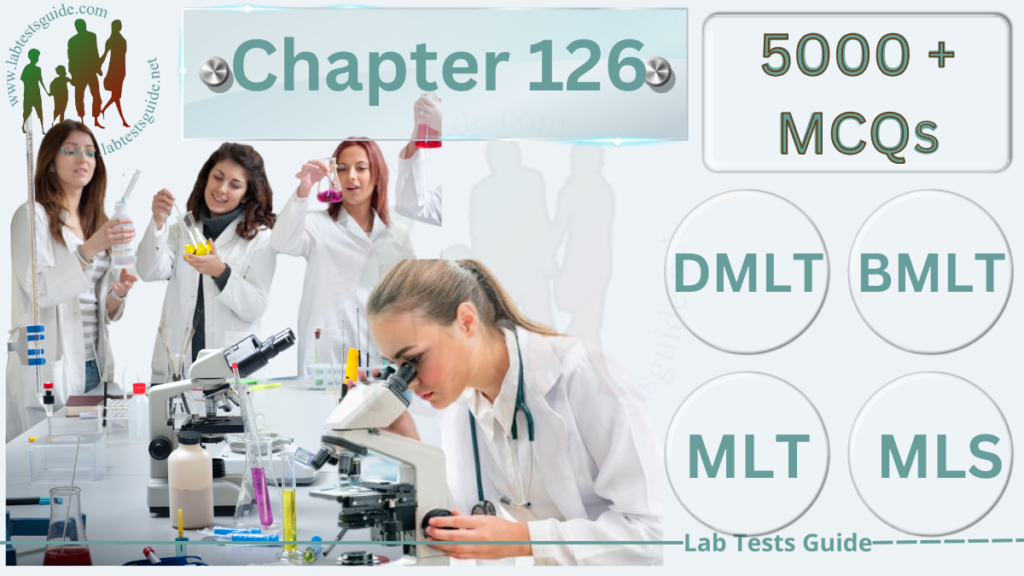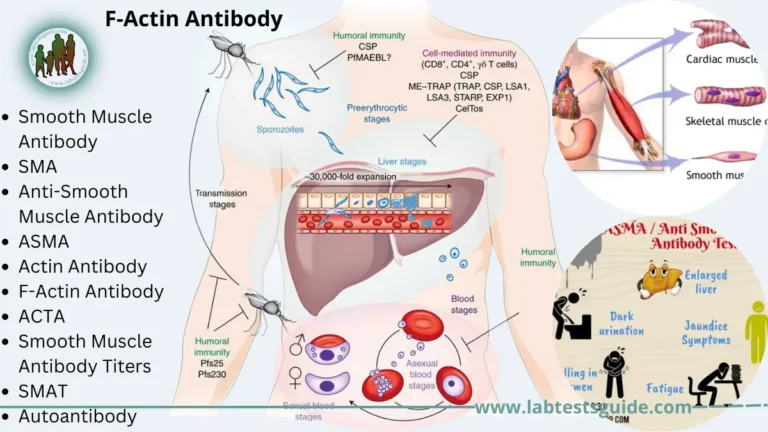6251 to 6300 MCQs for Lab Technician and Technologist Exam Preparation
5000 Plus MCQs for Lab Technician and Technologists are designed to test the knowledge and proficiency of laboratory professionals who work in the field of clinical laboratory science. These questions cover a wide range of topics related to laboratory science, including anatomy, physiology, microbiology, chemistry, and hematology.

If You like then share this to your friends and other social media.
If You have any question and suggestions then please Contact us Here
Questions 6251 to 6300
- Emperical formula of cobalamin is
- C63H88N12O14P.CO
- C61H82N12O12P.CO
- C61H88N12O14P.CO
- C63H88N14O14P.CO ✔
- A deficiency of vitamin B12 causes
- Beri-Beri
- Scurvy
- Perniciuos anemia ✔
- Ricket
- Vitamin B12 deficiency can be diagnosed by urinary excretion of
- Pyruvate
- Methylmalonate ✔
- Malate
- Lactate
- Subacute combined degeneration of cord is caused due to deficiency of
- Niacin
- Cobalamin ✔
- Biotin
- Thiamin
- Both folic acid and methyl cobalamin (vitamin B12) are required in
- Deamination of serine
- Deamination of threonine
- Conversion of pyridoxal phosphate to pyridoxamine phosphate
- Methylation of homocystein to methionine ✔
- Folic acid or folate consists of the
- Base pteridine, p-amino benzoic acid and asparate
- Base purine, p-amino benzoic acid and glutamate
- Base pteridine, p-amino benzoic acid and glutamate ✔
- Base purine, p-hydroxy benzoic acid and glutamate
- Folate as a coenzyme is involved in the transfer and utilization of
- Amino group
- Hydroxyl group
- Single carbon moiety✔
- Amido group
- Folic acid deficiency can be diagnosed by increased urinary excretion of
- Methylmalonate
- Figlu ✔
- Cystathionine
- Creatinine
- Sulpha drugs interfere with bacterial synthesis of
- Lipoate
- Vitamin E
- Tetrahydrofolate ✔
- Ascorbic acid
- Folate deficiency causes
- Microcytic anemia
- Hemolytic anemia
- Iron deficiency anemia
- Megaloblastic anemia ✔
- Thiamin is heat stable in
- Acidic medium ✔
- Alkaline medium
- Both (Acidic medium ) and (Alkaline medium)
- None of these
- Thiamin deficiency includes
- Mental depression
- Fatigue
- Beriberi
- All of these ✔
- Thiamin diphosphate is required for oxidative decarboxylation of
- α-Keto acids ✔
- α-Amino acids
- Fatty acids
- All of these
- Loss of thiamin can be decreased by using
- Unpolished rice
- Parboiled rice
- Whole wheat flour
- All of these ✔
- Daily requirement of thiamin is
- 0.1 mg/1,000 Calories
- 0.5 mg/1,000 Calories ✔
- 0.8 mg/1,000 Calories
- 1 .0 mg/1,000 Calories
- Thiamin requirement is greater in
- Non-vegetarians
- Alcoholics
- Pregnant women
- Both Alcoholics and Pregnant women ✔
- People consuming polished rice as their staple food are prone to
- Beriberi✔
- Pellagra
- Both (Beriberi ) and (Pellagra)
- None of these
- Riboflavin is heat stable in
- Acidic medium ✔
- Alkaline medium
- Neutral medium
- Both (Acidic medium ) and (Alkaline medium)
- FAD is a coenzyme for
- Succinate dehydrogenase
- Glycerol-3-phosphate dehydrogenase
- Sphingosine reductase
- All of these ✔
- Riboflavin deficiency can cause
- Peripheral neuritis
- Diarrhoea
- Angular stomatitis ✔
- None of these
- Pellagra preventing factor is
- Thiamin
- Riboflavin
- Niacin ✔
- Pyridoxine
- Niacin contains a
- Sulphydryl group
- Carboxyl group ✔
- Amide group
- All of these
- NADP is required as a coenzyme in
- Glycolysis
- Citric acid cycle
- HMP shunt ✔
- Gluconeogenesis
- NAD is required as a conenzyme in
- Citric acid cycle
- HMP shunt
- β-Oxidation of fatty acids
- Both (Citric acid cycle) and (-Oxidation of fatty acids) ✔
- Niacin can be synthesised in human beings from
- Histidine
- Phenylalanine
- Tyrosine
- Tryptophan ✔
- Daily requirement of niacin is
- 5 mg
- 10 mg
- 20 mg ✔
- 30 mg
- Niacin deficiency is common in people whose staple food is
- Wheat
- Polished rice
- Maize and /or sorghum ✔
- None of these
- In pellagra, dermatitis usually affects
- Exposed parts of body ✔
- Covered parts of body
- Trunk only
- All parts of the body
- Niacin deficiency can occur in
- Hartnup disease ✔
- Phenylketonuria
- Alkaptonuria
- None of these
- Sulphydryl group of coenzyme a is contributed by
- β-Alanine
- β-Aminoisobutyric acid
- Methionine
- Thioethanolamine ✔
- Coenzyme A contains a nitrogenous base which is
- Adenine ✔
- Guanine
- Choline
- Ethanolamine
- The following is required for the formation of coenyzme A:
- ATP ✔
- GTP
- CTP
- None of these
- Coenzyme A is required for catabolism of
- Leucine
- Isoleucine
- Valine
- All of these✔
- Deficiency of pantothenic acid in human beings can affect
- Nervous system
- Digestive system
- Both (Nervous system ) and (Digestive system) ✔
- None of these
- Pyridoxal phosphate is a coenzyme for
- Glutamate oxaloacetate transaminase
- Glutamate pyruvate transaminase
- Tyrosine transaminase
- All of these ✔
- Pyridoxal phosphate is required as a coenzyme in
- Transamination
- Transulphuration
- Desulphydration
- All of these ✔
- Pyridoxal phosphate is a coenzyme for
- Glycogen synthetase
- Phosphorylase ✔
- Both (Glycogen synthetase) and (Phosphorylase)
- None of these
- Pyridoxine deficiency can be diagnosed by measuring urinary excretion of
- Pyruvic acid
- Oxaloacetic acid
- Xanthurenic acid✔
- None of these
- Pyridoxine deficiency can be diagnosed by measuring the urinary excretion of xanthurenic acid following a test dose of
- Glycine
- Histidine
- Tryptophan ✔
- Pyridoxine
- Pyridoxine requirement depends upon the intake of
- Carbohydrates
- Proteins ✔
- Fats
- None of these
- Anti-egg white injury factor is
- Pyridoxine
- Biton ✔
- Thiamin
- Liponic acid
- When eggs are cooked
- Biotin is destroyed but avidin remains unaffected
- Avidin is inactivated but biotin remains unaffected ✔
- Both avidin and biotin are inactivated
- Both avidin and biotin remain unaffected
- Biotin is required as a coenzyme by
- Anaerobic dehydrogenases
- Decarboxylases
- Aerobic dehydrogenases
- Carboxylases ✔
- Biotin is a coenzyme for
- Pyruvate carboxylase
- Acetyl CoA carboxylase
- Propionyl CoA carboxylase
- All of these 11
- Lipoic acid is a conenzyme for
- Pyruvate dehydrogenase
- α-Ketoglutarate dehydrogenae
- Both (Pyruvate dehydrogenase) and (α-Ketoglutarate dehydrogenae) ✔
- None of these
- Chemically, lipoic acid is
- Saturated fatty acid
- Unsaturated fatty acid
- Amino acid
- Sulphur containing fatty acid ✔
- Folic acid contains
- Pteridine
- p-Amino benzoic acid
- Glutamic acid
- All of these ✔
- Conversion of folate into tetrahydrofolate requires
- NADH
- NADPH ✔
- FMNH2
- FADH2
- Riboflavin deficiency symptoms are
- Glossitis
- stomatis
- Vomitting
- Both (Glossitis ) and (stomatis) ✔
- Vitamin B12 forms coenzymes known as
- Cobamide ✔
- Transcobalamin I
- Transcobalamin II
- Both (Transcobalamin I) and (ranscobalamin II )
The questions are typically designed to assess the technical skills and knowledge required for the laboratory profession, including the ability to analyze laboratory test results, perform laboratory procedures, and maintain laboratory equipment.
To prepare for these MCQs, candidates should have a thorough understanding of the key concepts and principles of laboratory science. They should also be familiar with common laboratory equipment and procedures, as well as laboratory safety protocols.
Candidates may also benefit from studying specific laboratory science textbooks or taking online courses that cover the material tested in the MCQs. Additionally, practicing sample MCQs and reviewing the answers can help candidates identify areas where they may need to improve their knowledge or skills.
Overall, the MCQs for lab technologists are designed to be challenging and comprehensive, requiring candidates to demonstrate a high level of proficiency in the field of laboratory science.
Possible References Used







These are useful questions thank you alot